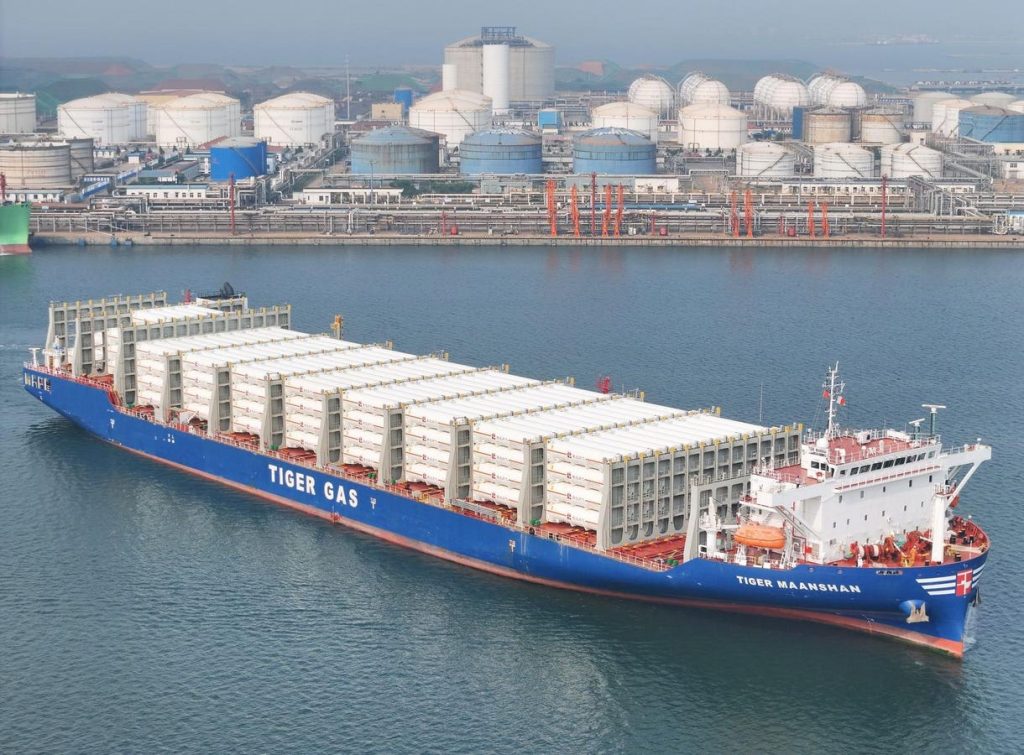U.S. LNG Emerges as a Cleaner Bridge Fuel in Global Energy Transition
The global shift towards cleaner energy sources has intensified scrutiny on the environmental impact of fossil fuels, including natural gas. While coal’s significantly higher greenhouse gas (GHG) emissions are well-known, a recent analysis by BRG Energy sheds light on the comparative emissions of liquefied natural gas (LNG) and pipeline gas, revealing crucial implications for international energy markets and the incoming Trump administration. The study’s findings are particularly relevant for Europe and Asia, major importers of both LNG and pipeline gas, as they strive to meet increasingly stringent environmental regulations.
The BRG Energy report compares the life-cycle GHG emissions of U.S. LNG exports with pipeline gas from various sources, including Russia, Algeria, Norway, and Azerbaijan, for both European and Asian markets. The analysis considers emissions from all stages of the process: upstream (production), midstream (transport), and downstream (consumption). A key takeaway is that U.S. LNG boasts a significantly lower emissions profile than coal and often performs favorably compared to pipeline gas, positioning it as a viable bridge fuel during the transition to renewable energy.
For supplies to Europe, the research reveals that U.S. LNG exhibits similar emissions levels to pipeline gas overall. However, a closer examination reveals variations depending on the pipeline gas source. Norwegian gas, benefitting from its proximity to European markets, has lower emissions, while gas from Algeria and Russia shows higher emissions than U.S. LNG. Crucially, the study highlights that downstream emissions from fuel combustion constitute the largest portion of the total emissions, overshadowing upstream and midstream emissions related to production and transportation. This underscores the importance of transitioning to lower-emission fuels like natural gas to effectively reduce overall GHG emissions. While the upstream and midstream contributions are smaller, they are still significant, accounting for roughly half the emissions of downstream combustion, reinforcing the need for continued efforts to minimize emissions across the entire supply chain.
The comparison of emissions for supplies to Asia presents a different scenario. Here, U.S. LNG demonstrates a clear advantage over most pipeline gas sources, except for Russian pipeline gas within Asia, which exhibits comparable emissions. This makes U.S. LNG a particularly attractive option for Asian countries seeking to reduce their reliance on coal, especially in Southeast Asia where pipeline infrastructure is less developed. High methane leakage rates appear to be a major contributor to the higher emissions associated with certain pipeline gas sources, like Turkmenistan.
The BRG Energy report emphasizes the ongoing importance of reducing emissions across all stages of LNG production and transport. The U.S. has already implemented regulations to curb gas flaring and methane leaks, and further advancements are expected with the deployment of technologies like MethaneSAT, a satellite designed to pinpoint and quantify methane leaks globally. These efforts align with the growing demand from LNG importers for cleaner energy sources.
These findings carry significant implications for the incoming Trump administration, which is expected to prioritize expanding LNG exports. While President-elect Trump has expressed skepticism about climate change, supporting measures to reduce GHG emissions associated with U.S. LNG production and transport is strategically advantageous. By demonstrating a commitment to producing cleaner LNG, the U.S. can strengthen its position in the global market, meeting the demands of importers like Europe and Southeast Asia who are increasingly prioritizing environmental considerations.
The data also provides valuable insights into the concept of Scope 1, 2, and 3 emissions, a framework used to categorize emissions based on their source. Scope 1 emissions are direct emissions from sources owned or controlled by a company, such as emissions from combustion in owned or controlled boilers, furnaces, vehicles etc. Scope 2 emissions are indirect emissions from the generation of purchased energy consumed by the company. Scope 3 emissions are all indirect emissions that occur in the value chain of the reporting company, including both upstream and downstream emissions. The study reveals that Scope 3 emissions, primarily stemming from downstream fuel combustion, account for a substantial portion of total emissions, often exceeding the combined Scope 1 and 2 emissions. This underscores the significance of Scope 3 emissions in comprehensive climate strategies and highlights the need for companies to address emissions throughout their value chain.
The findings of the BRG Energy report emphasize the role of natural gas, particularly LNG, as a bridge fuel in the global energy transition. With its lower Scope 3 emissions compared to coal, natural gas offers a less carbon-intensive alternative while the world continues to develop and deploy renewable energy technologies. This perspective underscores the strategic importance of investing in cleaner natural gas production and transportation to minimize environmental impact and support a more sustainable energy future. This contrasts with companies that focus solely on reducing Scope 1 and 2 emissions, neglecting the significant contribution of Scope 3 emissions to their overall environmental footprint. This comprehensive approach is crucial for achieving meaningful progress towards a lower-carbon future.


